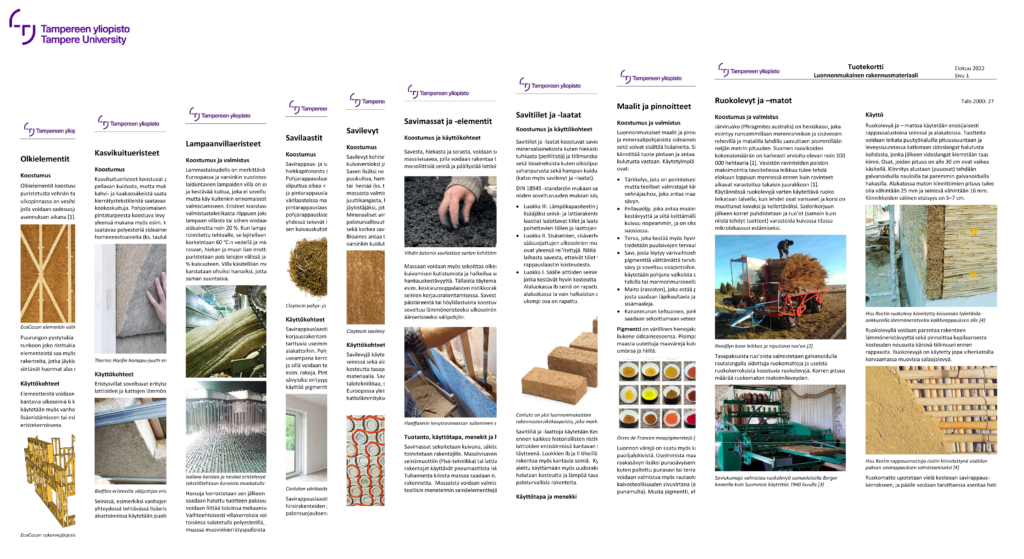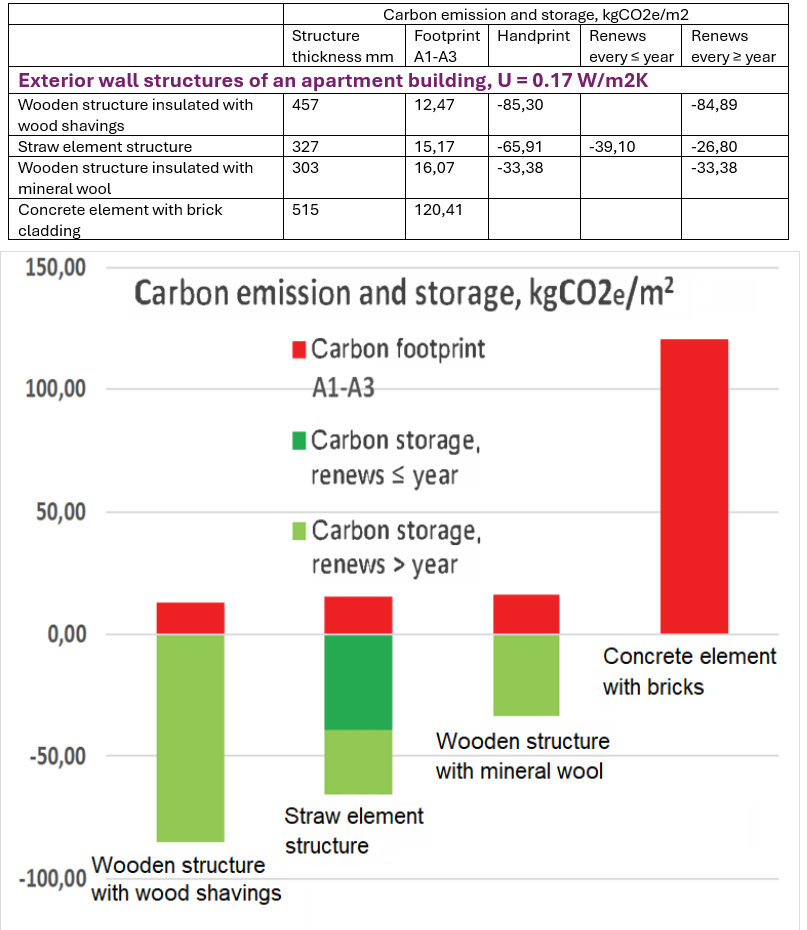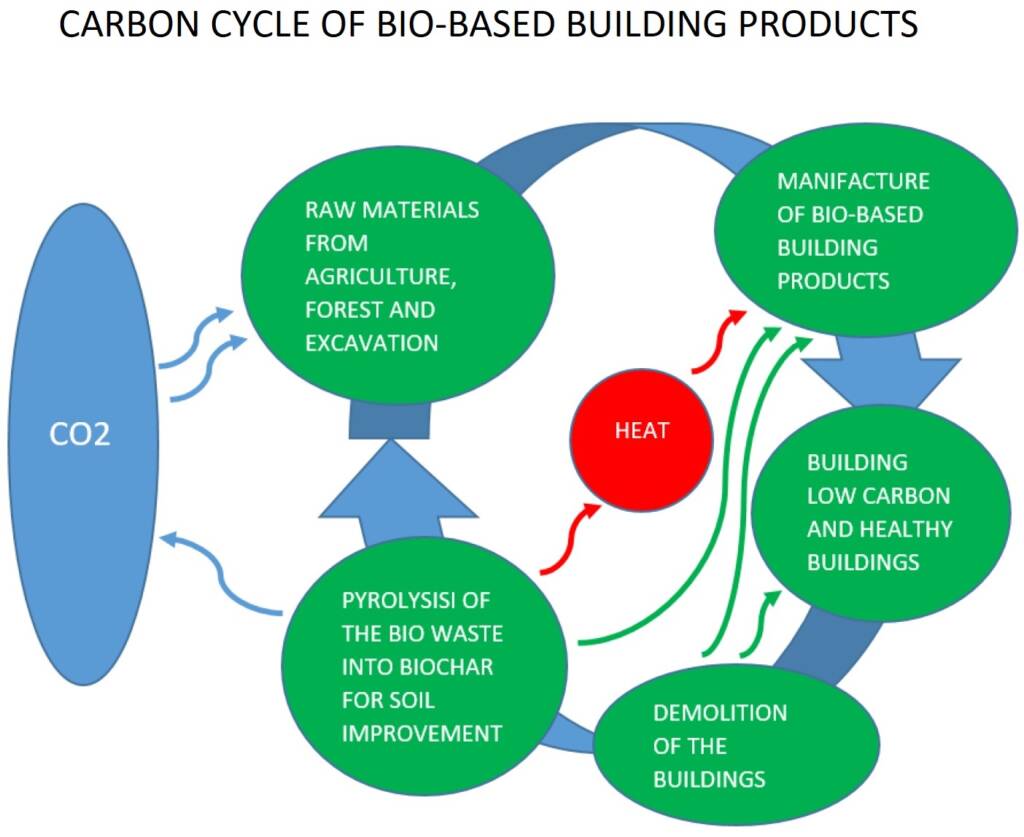The manufacture and use of Nature-Based Building products have rapidly become common in Central Europe, and information about these products is also wanted to be brought to the Finnish building materials industry. The main tasks of the project were the survey of construction products, the calculation and comparison of carbon foot/handprints, and the investigation of the potential use of the products. At the same time, an effort was made to find out the research and development needs of products and structures, and to outline the lower limit of carbon footprint of construction.
In the survey of NBB products manufactured industrially in Europe, a large number of products were found, from which 11 product cards were made based on technical characteristics and methods of manufacture and use of the products. The mapped products would be well suited to complement the wooden structures in use in Finland, and several house building concepts could be innovated from their combinations.

Click here to download product cards (in Finnish)
The effects of NBB products on indoor air conditions and health were also mapped in the product survey. These effects are largely based on the building physical and chemical properties of the products, such as the ability to balance the humidity and temperature of the room air, the fault tolerance and moisture safety of the structures, chemical emissions and non-toxicity, and the elimination of odours. The effects on indoor air conditions and health seem to strongly support the use of NBB products.
Based on the available Environmental Product Declaration (EDP) of the NBB products, they could currently reduce the carbon footprint of conventional wooden structures by an estimated 10–15%.

In the future, investment and production volumes as well as renewable energy sources will have a great impact on the production costs and carbon footprint of NBB products, so it is still difficult to say how low their prices and carbon footprints will fall. However, due to the constantly growing wind power capacity and good availability of raw materials, Finland has excellent starting points for the production of nature-based and low-carbon construction products, which would also bring self-sufficiency to our construction material production.
The project also proposes a method to take into account the carbon footprint of products by using carbon capture from bio-based construction waste. For example, about half of the carbon stored in structures would not return to the atmosphere when treated with pyrolysis. Annual plants as a raw material for construction products do not cause too much loss of the carbon sink.

The potential use of NBB products in Finland was investigated with the help of a workshop and a product exhibition, as well as the following internet survey. In the internet survey, products that are already used in Finland fared best, and the respondents would accept on average 15–20% higher prices than conventional construction products.
It has become clear in the project that there is a great need for the development and research of NBB products. Product development, education and general promotion of the field would suit well to the activities of Tampere University’s faculty of Built Environment, for example in the form of an innovation centre, but funding from outside the university should also be found for this.
The project was implemented between 1 May and 31 December 2022 and was financed by the Ministry of the Environment, Tampere University and 10 companies. Its responsible leader was professor Juha Vinha ( juha.vinha@tuni.fi ) and project manager Mikael Westermarck ( mikael.westermarck@tuni.fi ).
The project has received support from the Ministry of the Environment’s Low Carbon Built Environment program, which is funded by the EU’s Recovery and Resilience Facility (RRF).

